Black Silver & Gold Bordeaux Labels
While some Chateaux in Bordeaux, like Mouton Rothschild, are known for altering parts of their labels each year, most Bordeaux labels and bottles have remained relatively unchanged for over 40 years. And, despite the recent trend towards minimalistic or modern designs, most Chateaux labels have maintained a consistent visual aspect.
As I wrote in one of my recent posts (read it here), among the most illustrious, the label of Chateau Lafite Rothschild is an excellent example as it has only ever-so-slightly evolved.
Resisting change is a trait recognizable in most Classified Growths, on both left and right banks, long established and anchored in the aristocratic Bordeaux attitude, culture, and traditions, with a dash of Dutch demeanour and British phlegm.
Chateau Palmer is another great example of consistency, boasting the absolute "pitch blue" label (NB: it is not black; it is called "Palmer Blue" and is also the colour of perfectly ripened grapes) since 1869 (apparently).
And yet, the past two decades have witnessed some chateaux making bold decisions to modify or create a different label either to revamp them or to commemorate significant events linked with the history of the Chateaux or the owners, allowing their bottles to stand out from the ocean of other Bordeaux wines proudly.
In my opinion, the dark ("pitch blue") and gold label of Chateau Palmer is the quintessential definition of sophistication, class, elegance and refinement, with a "je ne sais quoi" of, if not royal, at least, aristocratic flair.
Globally, black, silver and gold have always been symbols of elegance, refinement and luxury.
Black is a matte colour emanating a sophisticated, elegant, classy, powerful, mysterious, timeless aura.
Silver is a refined and distinguished colour. As a noble metal, often the symbol of wealth and success throughout history, it represents brilliance, grace, innovation, refinement, sophistication, and glamour.
Gold is the colour of wealth and luxury, particularly when paired with black. It is a precious, revered, coveted metal, often linked with love, wisdom, and magic.
No wonder other chateaux have used these colours to mark the importance and significance of certain vintages.
The examples presented in my collage and below are just a few of the many Bordeaux wine labels that share similar characteristics. These examples showcase some of the most outstanding and complex Black, Silver & Gold Labels that Bordeaux has to offer.
Nice lineup, isn't it?
Yet, before explaining these labels briefly, let's step back with a little "aparté" about...
Some Bordeaux history (+ personal views and opinions)
For the 1855 "Exposition Universelle de Paris", Emperor Napoleon III requested a classification system for the best Bordeaux wines that would be presented at the exposition for the world to see. To do so, wine brokers and merchants established a list and ranked the wines according to the château's reputation and trading price, directly related to quality at that time.
Only 3 minor changes have occurred ever since. The addition of Chateau Cantemerle, as a Fifth Growth, in 1856. The rank elevation of Château Mouton Rothschild from second-growth to first-growth, in 1973, after decades of intense lobbying by its owner Philippe de Rothschild. And the removal of Château Dubignon, a third-growth from Margaux that was absorbed into Château Malescot St. Exupéry.
Understandably, over the last nearly 170 years, the reputation, trading price and, more importantly, the quality of some of these Chateaux have significantly changed as ownership and history underwent dramatic changes, notably during and in between WWI and WWII, then more noticeably after the wars.
Starting in the 50s, the 3rd industrial revolution saw the rapid progress of technology, machinery and innovation, moving from mechanical and analogue electronics to digital electronics. Yet, it also started the prominent use of plastics and chemicals in the 70S and GMOs in the 80s, which have increased exponentially, considerably affecting the vineyard's soils, subsoils and environment, and consequently, the wines.
Also, during the 60s and 70s, the focus was on mass production instead of prioritizing quality. Technics used in the vineyards and cellars led to numerous experiences and methods, good and bad, some now long abandoned, some that have lasted or evolved for the better, and some not.
Despite the changes happening in the wine industry at that time, both the chateaux that embraced them and those that held on to traditional methods failed to improve their approach to winemaking. The former increased production and the use of chemicals, while the latter resisted change, resulting in wines of lower quality on both sides.
Apart from a few exceptions, like 1961 and 1964, and 1975, most Bordeaux wines from the 60s and especially the 70s were mediocre to really bad (**).
In the 80s and 90s, vineyards and cellars underwent significant changes (both good and bad). Chemicals continued to be heavily used to protect vineyards from pests and diseases. Wine critics and flying winemakers emerged during this period, along with the implementation of 100-point ratings, like those used in the US. As a result, Bordeaux began making wines that catered to the American palate, and those with high ratings became subject to price speculation.
Starting in the early 2000s, there was a renewed interest in winemaking practices that were more natural and sustainable, such as "Lutte Raisonnée", "Biologique" (Organic), and Biodynamic. These methods aimed to create better quality wines while also considering the environment. However, some individuals remained resistant to change and continued to cling to outdated and polluting methods.
In the last 10-15 years, the Bordeaux bashing, the rise of Burgundy, the power of social media and the ever-increasing competition from the rest of the world have significantly influenced Bordeaux growers and chateaux owners to change their methods, adopt more natural processes, pay more attention to how they interact with the environment and nature in general, and more importantly increase the quality of their wines.
In recent years, open-minded and innovative growers, owners, and new generations have played an important role in renovating their brands, wines, bottles, and labels. They have adapted to new methods of approaching their customers, improving both the image of Bordeaux and theirs at the same time. This has been achieved by concentrating on quality, marketing, and interactive oenotourism activities to attract new customers.
Over the past 20-25 years, the quality of Bordeaux wine has greatly improved thanks to advancements in technology, machinery, science, methodology and knowledge. Undoubtedly, climate change and pollution have also played a significant role in this improvement. To maintain the quality of their vines, owners and winemakers have had to devote more time to the vineyards to prevent weather hazards such as frost, hail, heat, drought, and flood. Additionally, they have reduced or eliminated the use of chemicals in favour of more natural methods and products, paying closer attention to the environment.
And despite those who remain with a foot in the past, reluctant to change and adapt, overall, mentalities are changing in Bordeaux, and great improvements have been made, recently inspired by small groups of alternative owners and winemakers such as "Bordeaux Pirate" and "All you need is wine".
Bordeaux is known for offering some of the best quality-price ratios, and it's been said that making bad wines there is almost impossible now.
On that note, it's important to remember that Bordeaux is not limited to the Top 300 most renowned and expensive Chateaux, which only make up about 4% of the 7500 Chateaux and vineyards.
There are around 9000 wines produced in Bordeaux, including a vast amount of small Chateaux for under 15 Euros (or USD16.5) that are delicious and definitely worth trying. These wines provide excellent value compared to other wines in the same price range from around the world.
Now, if we only focus on the classified growth, the same situation occurs. Some owners and winemakers are still locked in the old days and Bordeaux's "traditional" style. Yet, some have made drastic changes and tremendously improved. Surpassing the "expected" quality of their rank and thus rivalling or outpassing their higher-ranked and more expensive neighbours. Questioning the credibility of the classification. Is the 1855 classification still representative of the Chateau's reputation, quality and price?
The "En Primeurs" tasting provides a unique opportunity to discern the disparities in quality between neighbouring Chateaux that share the same rank, appellation, and/or similar prices. Despite my annual anticipation that I'll be amazed by some changes and improvements, I'm consistently let down as I come to the realization that the winemakers who consistently produce lesser wines in good years and bad years remain unchanged.
Meaning that every year, prior to going to the "En Primeurs" tasting, I reset the button of my "preconceived notions" to free my mind from any biased thoughts, hoping to finally be surprised by the new wine of the Chateaux I previously had less interest in due to the lesser quality of their wine. And unfortunately, it never fails! The good ones are good to great. And the bad ones are mediocre to bad, as usual... disappointing, especially when you know the price some of these Chateaux ask for.
I'm not the only one to say it or think that way. Thus, it is not "just" my palate or my opinion.
Proving that the bad ones have not changed or even improved over the years. Demonstrating the veracity of the fact that they are still stuck in the past, making a supposedly "traditional" style of Bordeaux (usually dusty, dry, tight, tannic, austere, underripe or overripe, often unbalanced and inhomogeneous) that has not evolved for decades and only exists to satisfy an ageing crowd of amateurs and nostalgics.
I find it surprising that despite receiving negative feedback and low scores from experts, journalists, and critics over the years, some winemakers still refuse to make improvements. They argue that their wine's taste is a product of their terroir, traditions, methods, and vision, even if it falls short of its potential.
From their perspective, understandably, they are content with their wine's quality, but is it worth its high price?
While writing these lines, many examples come to my mind, but I will not cite anyone or further detail my opinions on the subject, as tasting is very subjective. Yet, some of you will understand what I'm trying to say.
To sum up, while Chateaux owners and winemakers insist on producing top-notch wines that align with their status and classification, it's perplexing to note that some Chateaux continue to charge exorbitant prices based on their rank, even though their wines are of inferior quality compared to lower-ranked wines that are better in quality and less expensive.
For all the reasons cited above and after decades of countless debates about whether to review the 1855 Classification, you would think that the Bordelais would have opted for a revision like they did with the appellation of St. Emilion, where the Classification is reviewed every ten years.
But NO! The 1855 Classification is immutable and set in stone forever. All attempts at change were a failure so as not to hurt anyone's ego and to avoid pointing fingers or saying out loud what many are thinking in a whisper.
Ultimately, it is undoubtedly better if the 1855 Classification remains untouched, especially when you see the "fiasco" of the recent revisions in other appellations like Saint-Emilion and all the problems this has caused.
Bordeaux is a world where the establishment, family names, traditions and money hold power and determine what is considered socially acceptable. It is a place where people often appear friendly in public but may betray each other privately. This environment fosters a strong, often unhealthy sense of competition and exacerbates jealousy (typically French), especially observable in lesser vintages.
Fortunately, most of the top-tier Chateaux in Bordeaux make excellent wines, which balance things out in each appellation. And fortunately for the Bordelais, each decade, they benefit from about 5-6 good to great vintages (**) to fall back on their feet, save their image and justify their attitudes and ever-increasing prices.
Yet, who am I to judge? After all, everything about tasting and liking wine is so subjective that it is difficult to be objective or rational.
...
The topic has been ongoing for decades and is way too long to be discussed in only one post. So I will stop here for now.
Regular followers know I am not ranting or venting. I'm just a very "vocal" and opinionated French-American man who likes to freely express his opinions and discuss topics others tend to avoid. 😇😁👍🍷
However, let's move on, as once again, I digressed from the main topic (one of my many recurring bad habits 😅).
Where were we? Ah, yes, I was about to talk about the Classification of Saint-Emilion and the first 2 labels on the left of my collage above.
The rollercoaster of the Classification of Saint-Emilion
As described above, once established, Classifications are difficult to revise. And any attempt at revision or update usually generates controversy, debate and complaints.
Despite what seemed to be a fair vote, the recent classifications of Saint-Emilion proved that it can be biased when parts of the jury are Chateaux owners who might have a personal interest in seeing their Chateaux promoted. And like for any other votes or listing establishment, there are always people to disagree with and contest it, especially if their chateaux get demoted.
Many articles have been written on the subject at the time, so I won't extend much on it. Yet, for those of you who may not have followed what happened, here is a brief résumé:
The classification of Saint-Emilion wines was first thought of in 1930, but it remained an idea until 1954, when the INAO agreed to handle the list. It was first published on June 16, 1955, and was amended on August 7 and October 18, 1958.
Following the initial classification, which included 12 Premier Grands crus classés and 63 Grands crus classés, the list was updated in 1969, 1986, 1996, 2006, and 2012. "However, the 2006 classification was declared invalid following a series of legal actions. The 1996 version of the classification has been reinstated for the vintages from 2006 to 2009." - Wikipedia
To prevent the situation of the 2006 Classification, the INAO decided that the 2012 Classification would be done by an independent group of people with no involvement in St.-Emilion Wine Syndicate and the Bordeaux wine trade. But instead, wine professionals from Burgundy, the Rhône Valley, Champagne, the Loire Valley, and Provence made up a seven-person commission.
However, despite a different method and new handling, complaints and disagreement for the 2012 classification proved inevitable, leading to an even worst situation for the 2022 Classification. Three out of four of the Chateaux Classés "A" (the two original ones, Chateau Ausone and Chateau Cheval Blanc, and one of the two promoted in 2012, Chateau Angelus) withdrew their application for the 2022 ranking.
Although each of the 3 chateaux acted individually, without consulting one another, their reasons for withdrawing from the 2022 classification were very similar, with Chateau Cheval Blanc stating in a letter sent to Bordeaux Negociants and courtiers "a profound change in the philosophy of the classification, especially regarding new criteria that amount to “marketing drift”, such as the importance of product placement, how often an estate appears in media, including PR and in social media, along with wine tourism infrastructure."
It is understandable that being judged on their "Social Media" and "Oenotourism" impact, rather than their respective terroir, viticulture, and the quality and ability to age of their wines, based on an "evaluation system" not taking into consideration the "notion of identity and typicity, as if the culture of wine, its ageing capacity over several decades, and knowledge of the appellation were unnecessary for evaluating the estates", does not seem to be either fair, reasonable, right or just.
It better explains why the 1855 classification has never (and probably will never be) touched.
....
Ok, I think that, once again, I got carried away with my thoughts and opinions. I have been writing way too much for what was supposed to be a short post.
So, let's jump into the labels.
The Black, Silver & Gold Labels
After decades of reign on the Rank "B" of the Classification, Chateau Angelus and Chateau Pavie were promoted to Grand Cru Classé "A" status in the 2012 Classification of St. Emilion wines, joining Chateau Ausone and Chateau Cheval Blanc.
Chateau Angelus 2012
Chateau Pavie 2012
It's worth noting that in the 2022 Saint-Emilion Classification, Chateau Pavie maintained its "A" status, while Chateau Figeac was promoted from "B" to "A". Interestingly, Pavie is the only one out of the four Chateau Grand Cru Classe A in 2012 that remained in the 2022 classification.
Chateau Margaux 2015
Chateau Mouton Rothschild 2000
Chateau Palmer
Chateau Palmer's label is so classy and distinguished that I would not be surprised if it has inspired the other Chateaux mentioned in this post to use the Black, Silver and Gold colours for their one-off label designs.
Even though the label for this particular Chateaux wasn't designed to honour any specific historical event related to either the estate or its owners, I decided to include it on this list. This is because the "Pitch Blue" colour used on their label, also known as "Palmer Blue", dates back to 1869, making it probably the first Bordeaux estates to use a combination of Dark, Silver, and Gold colours.
Chateau Smith Haut Lafite 2015
In 1990, Florence and Daniel Cathiard fell in love with Chateau Smith Haut Lafitte. They restored it and brought it back to its splendour to perpetuate its tradition of excellence. After 3 years of renovating the estate, they moved into the 18th-century Chartreuse, and the rest is history.
For the 2015 vintage, the Cathiards designed a special label and capsule, displaying writings and logos and a chateau representation embossed in Silver and Gold on black to commemorate their 25th harvest and the 650th anniversary of Chateau Smith Haut Lafitte. This chateau has been around since 1365, making it a truly historic landmark
Both their whites and red wines constantly receive accolades and good scores from the critics, the press and the professionals. The restaurant, hotel and spa, conveniently located at the Chateau, form a haven of peace and are highly recommended.
Their two daughters followed their parent's steps creating businesses to further enhance the reputation of the Chateau and extend its image throughout the country and even the world.
Alice Tourbier-Cathiard and her husband, Jérôme, run two hotel facilities, "Les Sources de Caudalie", a luxury hotel in the middle of the vines at Chateau Smith Haut Lafitte, and "Les Sources de Cheverny" in the Loire Valley.Mathilde Thomas-Cathiard and her husband, Bertrand, founded the "Caudalie" company, which creates and sells exclusive beauty care products from grape seeds and vine cuttings worldwide.
Chateau Cos d'Estournel 2020
Chateau Ducru Beaucaillou - Croix de Beaucaillou 2010
As a bonus, I wanted to mention two more Chateaux that I couldn't fit in my collage due to limited space but are still noteworthy for this post on Black, Silver & Gold Bordeaux Labels.
Chateau Talbot 2018
Chateau Sociandot Mallet 2018
Jean Gautreau, born in April 1927 in the small town of Lesparre in the Medoc, was not from a family involved in the wine industry. He worked for the brokerage firm of Miailhe until 1950, when he became an independent broker. Recognizing the rising cost of Bordeaux wines as an opportunity to create a profitable business, he established his own négociant firm in January 1957.
Voilà! That's all, folks!
Stay tuned for more posts, and in the meantime, take good care of yourself and your loved ones.
Cheers! Santé!
Dom
(*) Back in 2013, I was sent for 5 months in France with one of my directors to oversee the transition of ownership of Chateau Le Bon Pasteur, recently acquired by the company I worked for at the time.
(**) If interested, you can read my post on my "Theory of the decades for Bordeaux vintages" part 1 here and part 2 here ).
Collage by @ledomduvin 2023
#bordeaux #wine #vin #vino #wein #label #labels #black #silver #gold #ledomduvin @ledomduvin #lescollagesadom #lescreationsadom #bordeauxlabels













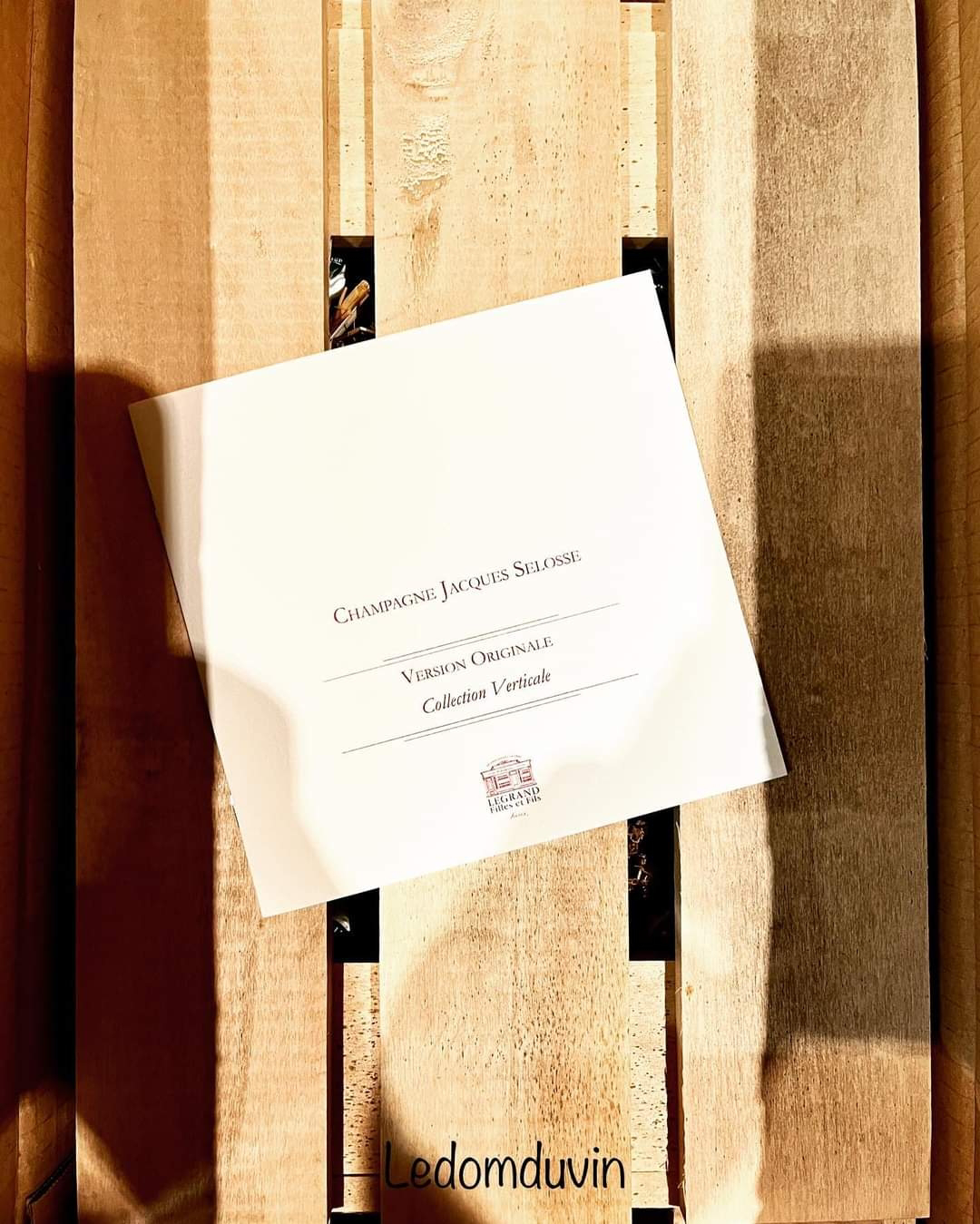


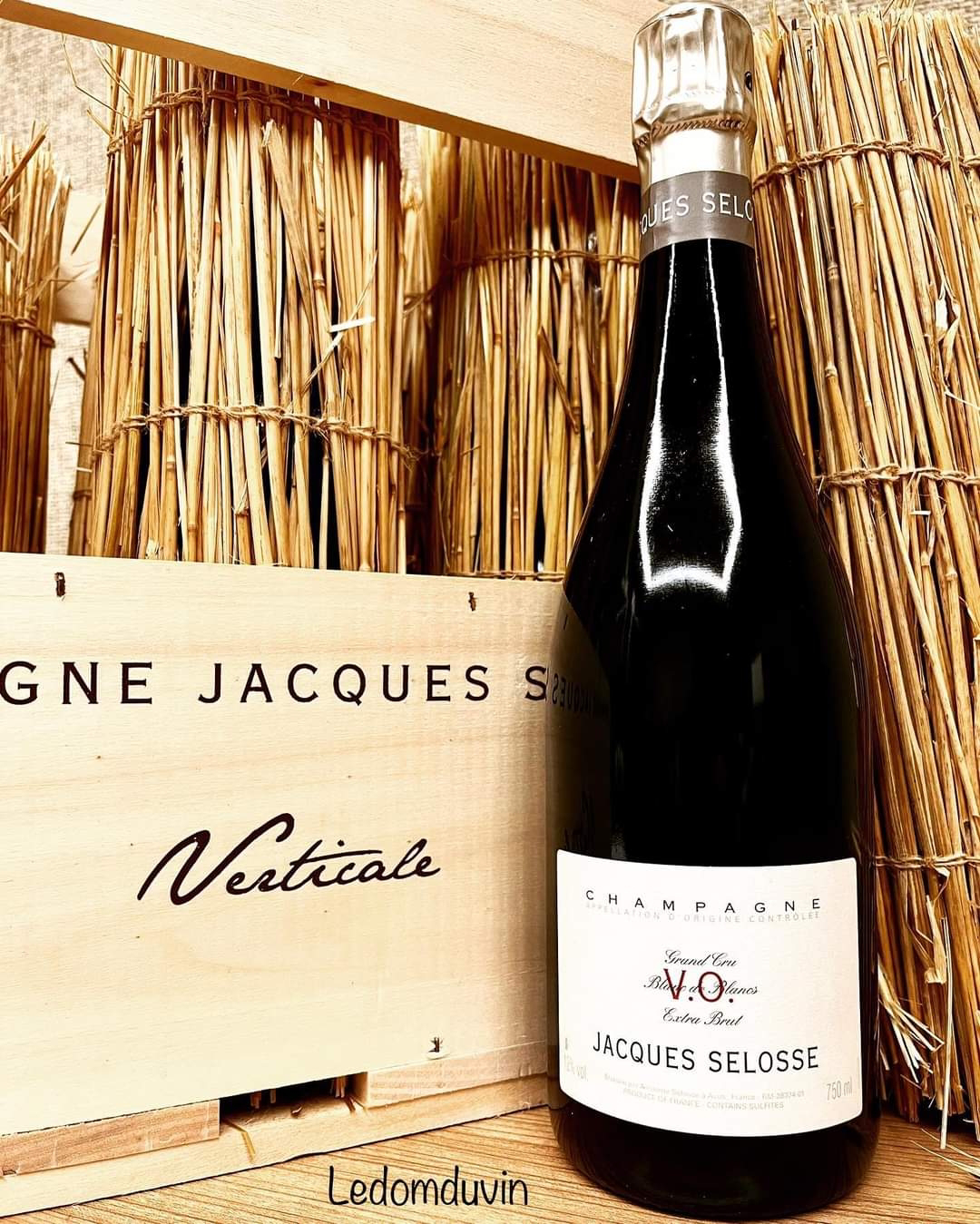




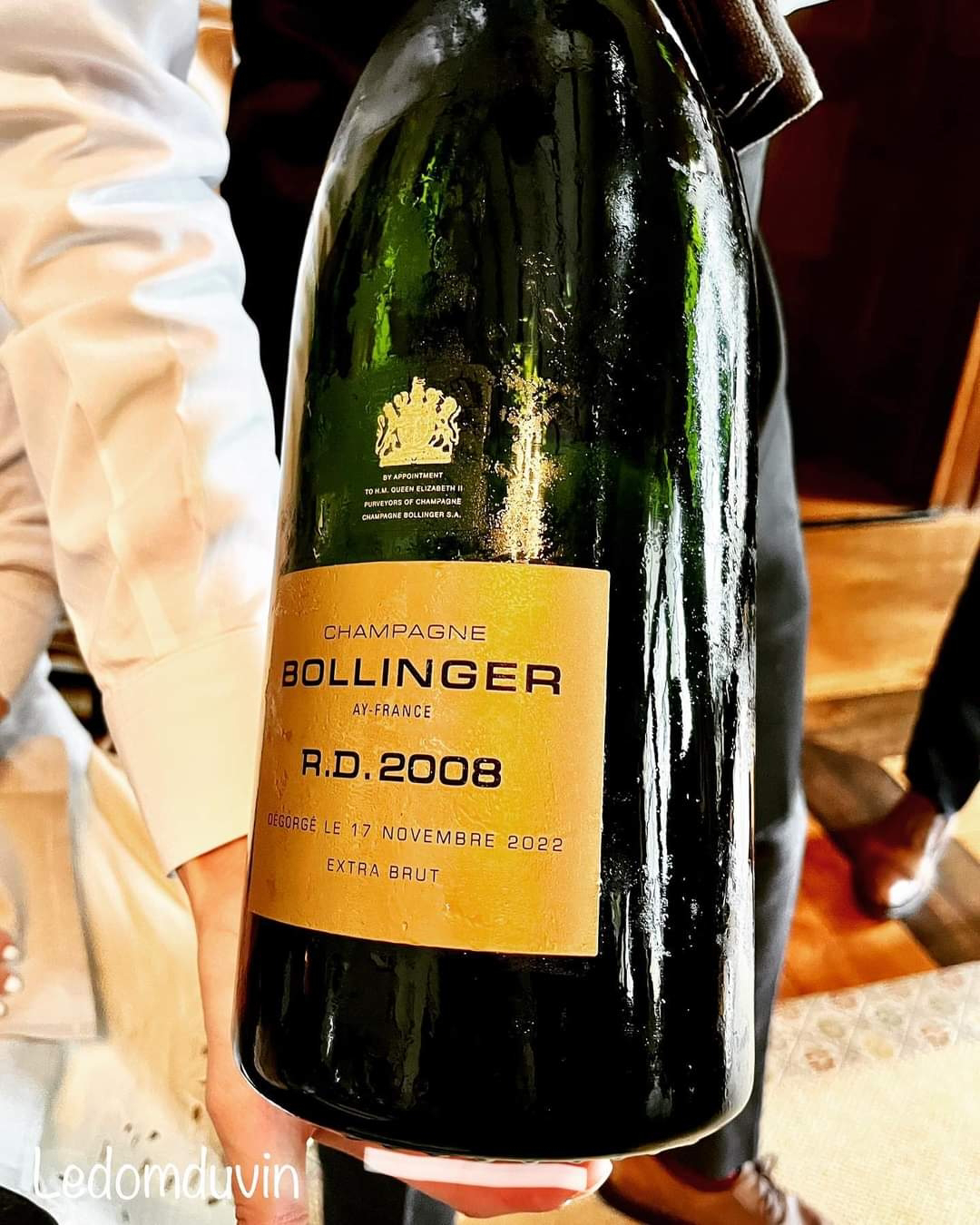
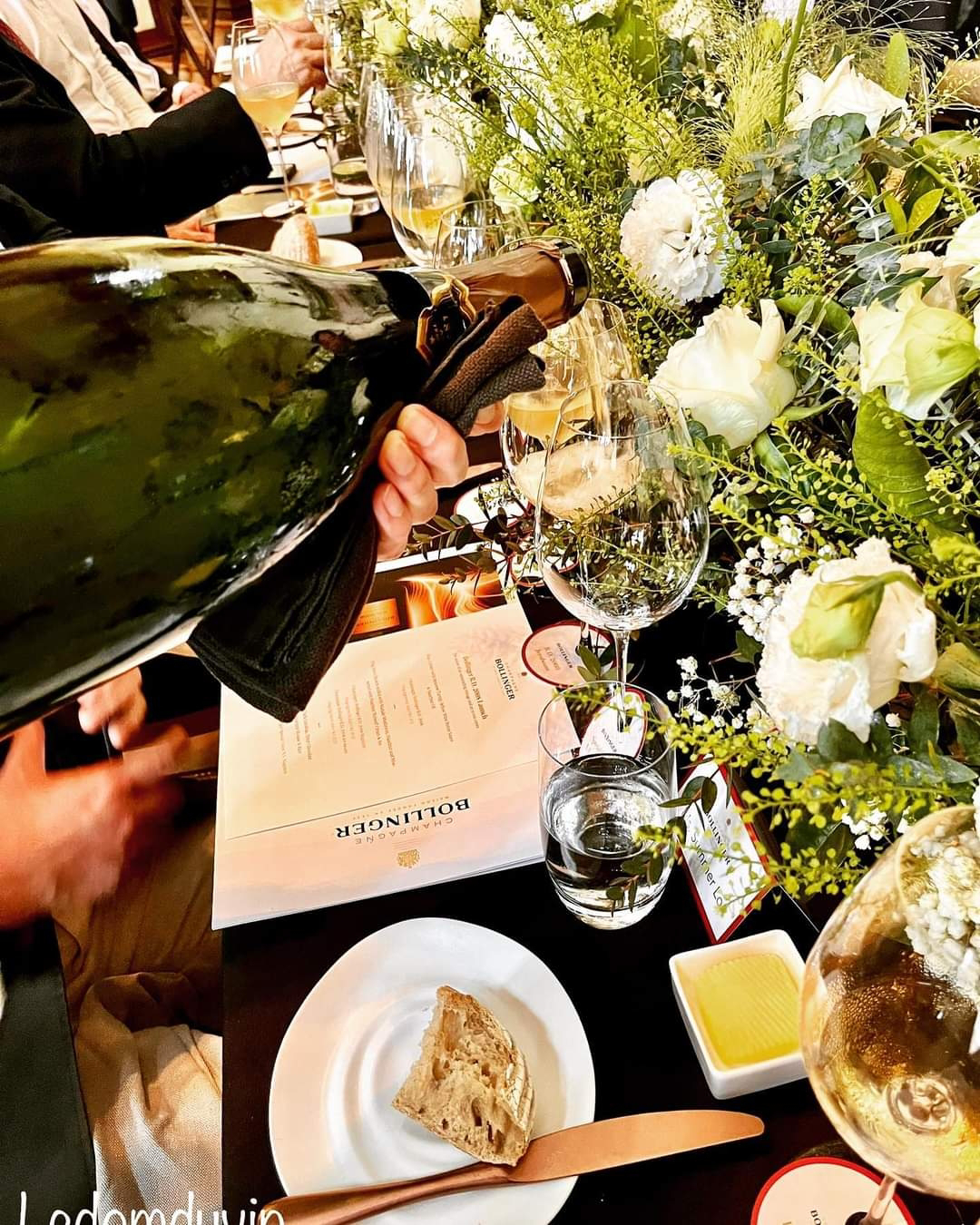
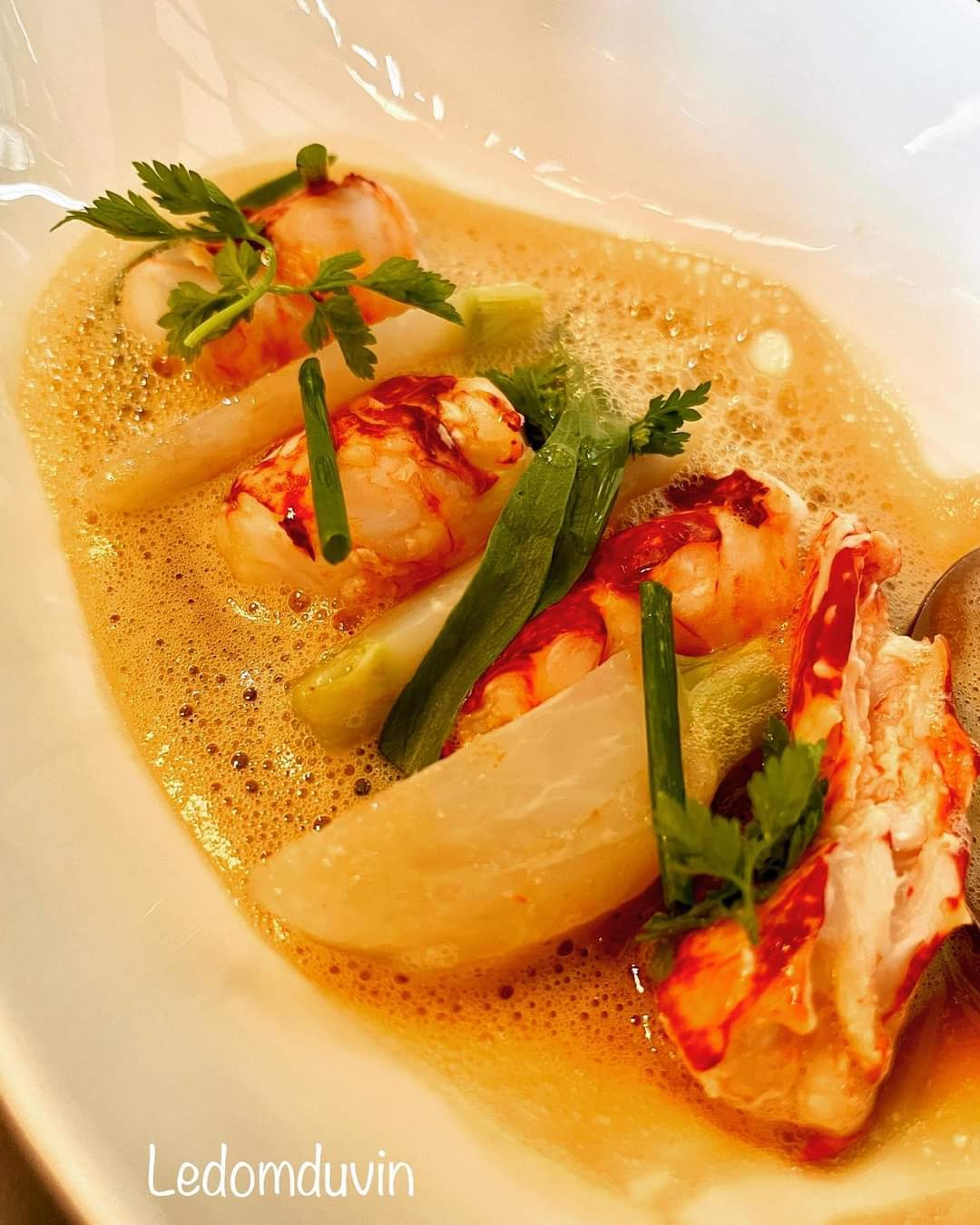

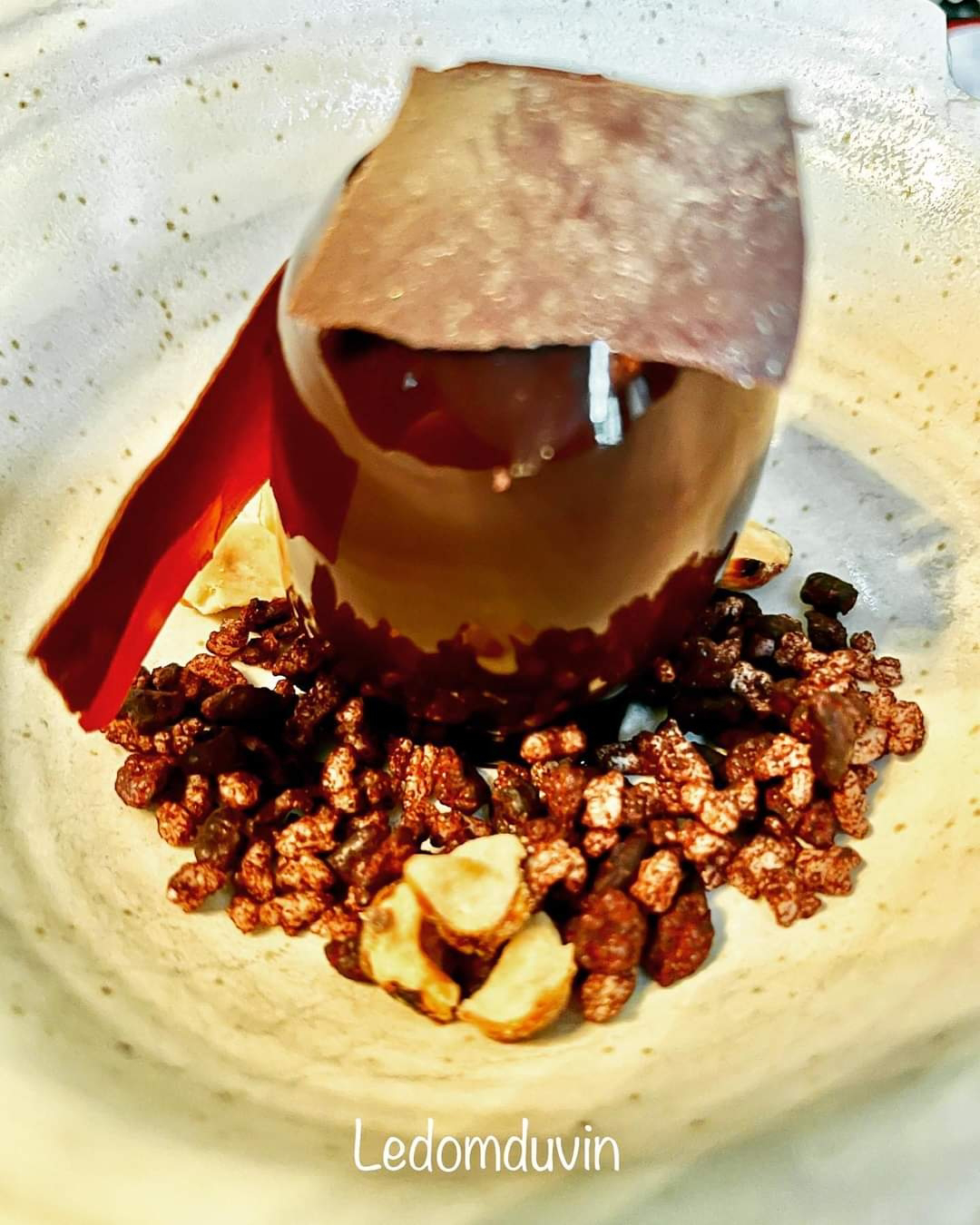



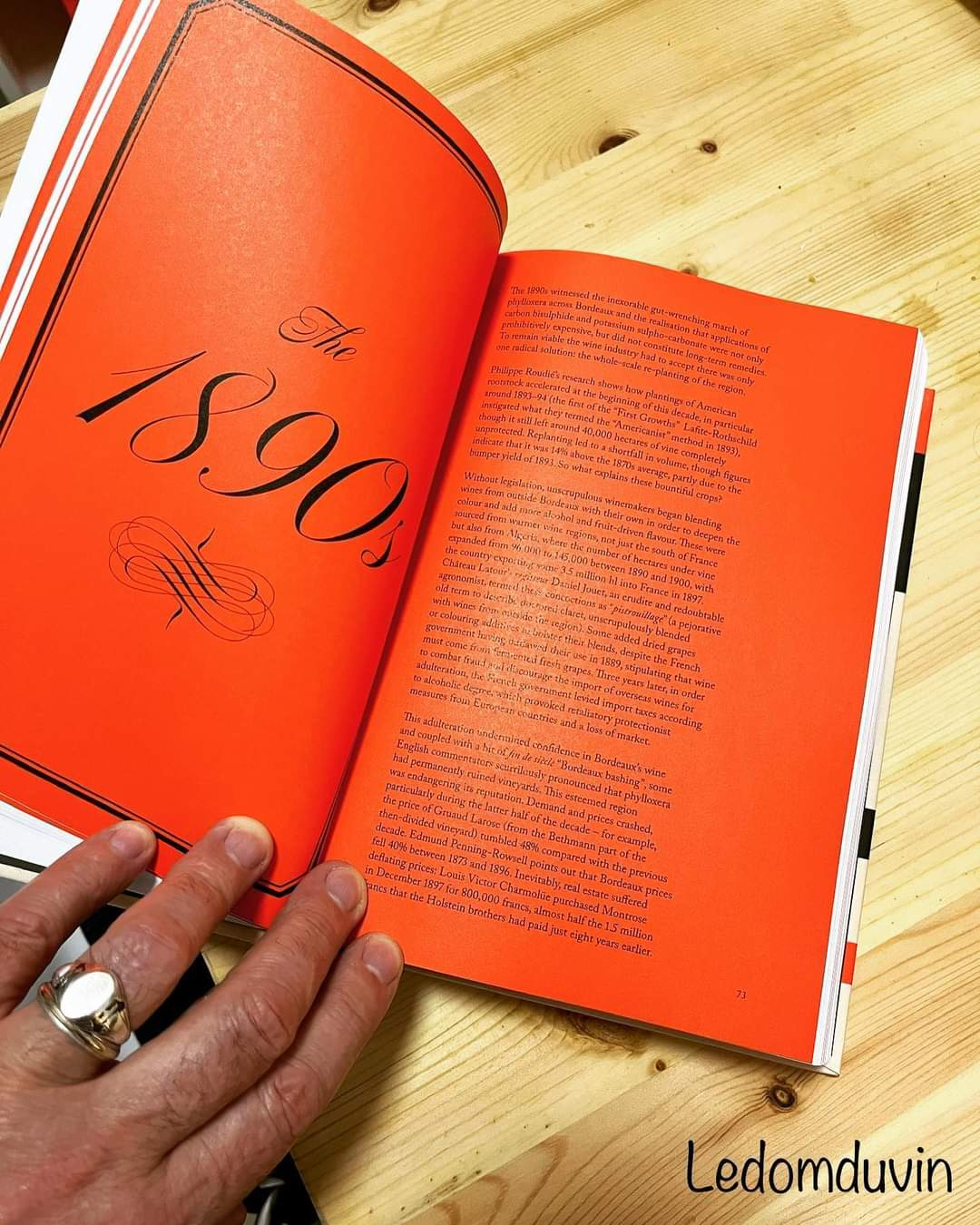



.png)








